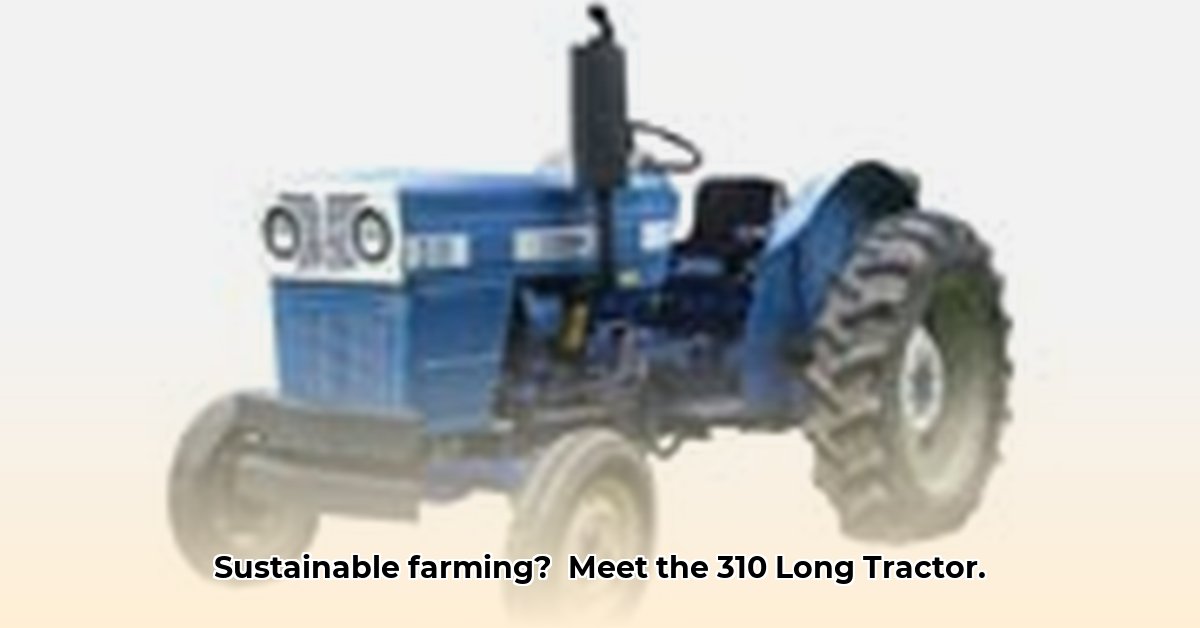
310 Long Tractor: A Romanian Legacy in Sustainable Agriculture?
The Long 310 tractor, a product of 1980s and 1990s Romania, presents a compelling case study in the intersection of agricultural history and sustainable farming practices. While seemingly a relic of the past, its robust design and surprising fuel efficiency warrant a closer look at its potential role in today's environmentally conscious agriculture. For more on small tractors, see this useful resource. This article explores the 310 Long's technical specifications, its historical context, and its potential contribution to a more sustainable future, while acknowledging the need for further research.
A Closer Look at the 310 Long: Specifications and Features
The Long 310 is a testament to pragmatic engineering. Its core is a modest 1.8-liter, two-cylinder diesel engine. While not boasting the horsepower of modern tractors, this smaller engine is known for its remarkable fuel efficiency – a significant advantage in an era of rising fuel costs. Its 14.3-gallon fuel tank allows for extended periods of operation between refills, optimizing workflow and minimizing fuel-related downtime. The tractor offered options for either a 6-speed or 8-speed transmission, providing adaptability to varied terrains and tasks. This adaptability, a hallmark of its design, underscores a focus on versatility and practical application. Furthermore, its band brakes and open-center hydraulic system simplify maintenance, reducing the need for specialized tools and technicians—a crucial aspect for smaller farms or those in regions with limited access to skilled mechanics. Isn't simplicity, reliability, and ease of maintenance key to sustainable practices?
Sustainability Analysis: A Different Kind of Green
Can a tractor from the Cold War era contribute to sustainable agriculture today? The answer is nuanced. While lacking comprehensive emission data crucial for a complete environmental impact assessment (a significant limitation), the 310 Long's inherent fuel efficiency represents a considerable advantage. Its smaller engine consumes less fuel than many larger modern counterparts, thereby reducing a farm's carbon footprint. The simple mechanical design translates to fewer parts that could break down, resulting in reduced maintenance costs and waste. However, a complete picture requires a comparison with modern tractors designed with sustainability explicitly in mind, along with a comprehensive lifecycle assessment (LCA) that accounts for the entire environmental impact, from manufacture to disposal. This remains a vital area for ongoing research.
Historical Context: A Product of its Time
Understanding the Long 310's design choices requires examining its historical context. Developed in Romania during a period of socialist agricultural collectivization, it was engineered to meet the demands of a system facing resource constraints. The emphasis on practicality over high-tech features reflects the economic realities of its time and could resonate with contemporary efforts toward resilient, low-input agriculture. This historical perspective enriches our understanding of its design choices and their potential relevance today.
Actionable Insights: Moving Forward
To fully assess the 310 Long's role in sustainable agriculture, several steps are crucial:
- Comprehensive Data Acquisition: A systematic effort to gather fuel consumption, maintenance, and operational data from existing owners and archives is essential.
- Rigorous Comparative Analysis: A meticulous comparison of the 310 Long to both contemporary and modern tractors must be undertaken, considering factors like fuel efficiency, emissions, and life-cycle costs. This will involve direct comparisons with similar horsepower output and similar functionalities.
- Complete Lifecycle Assessment (LCA): A comprehensive LCA is vital for a thorough understanding of the tractor's overall environmental impact throughout its lifespan.
- Modernization Potential: Investigating the feasibility of integrating modern technologies, such as precision farming tools, into the 310 Long could enhance its efficiency and reduce its environmental footprint.
Who Benefits from Further Research?
The potential benefits of researching the Long 310 extend beyond the tractor itself:
- Agricultural Historians: Gain deeper insight into the evolution of agricultural technology.
- Sustainable Agriculture Researchers: Obtain valuable data for improving sustainable farm equipment design.
- Small-Scale Farmers: Potentially access affordable and maintainable equipment.
- Environmental Scientists: Obtain crucial information about the environmental impact of older farm equipment.
Conclusion: An Ongoing Story
The Long 310 tractor presents a fascinating opportunity to explore the historical context of sustainable agriculture. Further research is vital to determine its true potential in this field. The findings will offer valuable insights into both sustainable agricultural practices and the potential role of older machinery in modern farming. The story of the Long 310 is far from over; it's a story that continues to unfold.